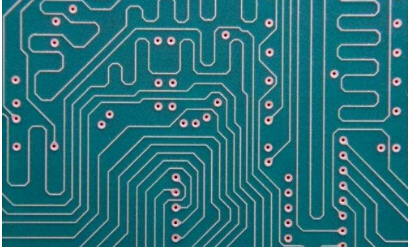What are the methods of special electroplating in PCB production
1. Finger row type electroplating equipment
In electroplating, it is often necessary to plate rare metals on board edge connectors, board edge protruding contacts or gold fingers to provide lower contact resistance and higher wear resistance. This technology is called finger row electroplating or protruding part electroplating .
In electroplating, gold is often plated on the protruding contacts of the board edge connector with the inner plating layer of nickel. The gold fingers or the protruding parts of the board edge adopt manual or automatic electroplating technology. At present, the gold plating on the contact plug or gold finger has been plated. Replaced by lead and plated buttons.
2. PCB through hole plating
In through-hole electroplating, there are many ways to build a layer of electroplating layer on the hole wall of the substrate drilled hole, which is called hole wall activation in industrial applications. The commercial production process of its printed circuit requires multiple intermediate storage tanks, each of which has its own control and maintenance requirements.

Through hole plating is a necessary follow-up process of the drilling process. When the drill bit drills through the copper foil and the substrate underneath, the heat generated melts the insulating synthetic resin that constitutes most of the substrate matrix, the molten resin and other drilling debris It is piled up around the hole and coated on the newly exposed hole wall in the copper foil.
In fact, this is harmful to the subsequent PCB electroplating surface. The molten resin will also leave a layer of hot axis on the substrate hole wall. It exhibits poor adhesion to most activators, which requires the development of another A technology similar to stain removal and etch back chemistry: ink!
The ink is used to form a highly adhesive and highly conductive film on the inner wall of each through hole, so that there is no need to use multiple chemical treatments, only one application step, and then heat curing, it can be on all the hole walls. A continuous film is formed on the inside, which can be directly electroplated without further processing. This ink is a resin-based substance that has strong adhesion and can be easily adhered to the walls of most thermally polished holes, thus eliminating the step of etchback.
3. Selective plating with reel linkage
The pins and pins of PCB electronic components, such as connectors, integrated circuits, transistors, and flexible printed circuits, all use selective plating to obtain good contact resistance and corrosion resistance.
This kind of electroplating method can use manual electroplating production line or automatic electroplating equipment. It is very expensive to select and plate each pin individually, so batch welding must be used. In electroplating production, the metal foil is usually rolled to the required thickness. The two ends are punched, cleaned by chemical or mechanical methods, and then selectively used for continuous electroplating such as nickel, gold, silver, rhodium, button or tin-nickel alloy, copper-nickel alloy, nickel-lead alloy, etc.
4. Brush plating
The last method is called "brush plating": it is an electrodeposition technique in which not all parts are immersed in the electrolyte during the electroplating process. In this kind of electroplating technology, only a limited area is electroplated, and there is no effect on the rest.
The difference between circuit board PTH and plastic plating
Compared with metal parts, plastic electroplated products can not only achieve a good metal texture, but also reduce the weight of the product. While effectively improving the appearance and decoration of the plastic, it also improves its electrical, thermal and corrosion resistance. Performance, improve the mechanical strength of its surface. In daily life, many people do not know the difference between plastic plating and circuit board PHT.
Plastic electroplating is different from PCB PTH electroplating. The circuit board PTH process is a type of plastic electroplating, which mainly uses a catalyst to deposit on the plastic surface and then use metal electroplating to thicken the deposited layer.
In general pre-treatment of plastic electroplating, the main steps are roughening the surface, depositing catalyst, precipitating conductive metal, thickening electroplating, rust prevention or passivation treatment. These basic procedures are roughly the same in different fields, but they will still follow. Make appropriate adjustments to differences in product quality requirements.
Disadvantages of the two technologies In the early umbrella industry, the front end of the umbrella cap was coated with graphite to produce a conductive layer, and then metal electroplating was done. But you can find that the metal film is very easy to fall off. This is caused by imperfect pre-processing, but it is still used because of the low price. In addition, current sanitary equipment products also have similar applications, such as faucet knobs, washbasin accessories, etc., which have traces of this technology.
The birth of the alloy catalyst fluid The professional alloy catalyst fluid that replaces the traditional electroplating technology is born! The advent of a new generation of environmentally friendly special surface alloy catalyst fluid opened up a new era of metal surface treatment. This technology uses chemical displacement reaction to react with the workpiece itself through infiltration and deposition to form a new alloy layer. It does not peel, does not fall off, and its performance is very stable. The alloy catalyst liquid has the characteristics of green environmental protection, simple process and low cost, and is widely used in various fields.